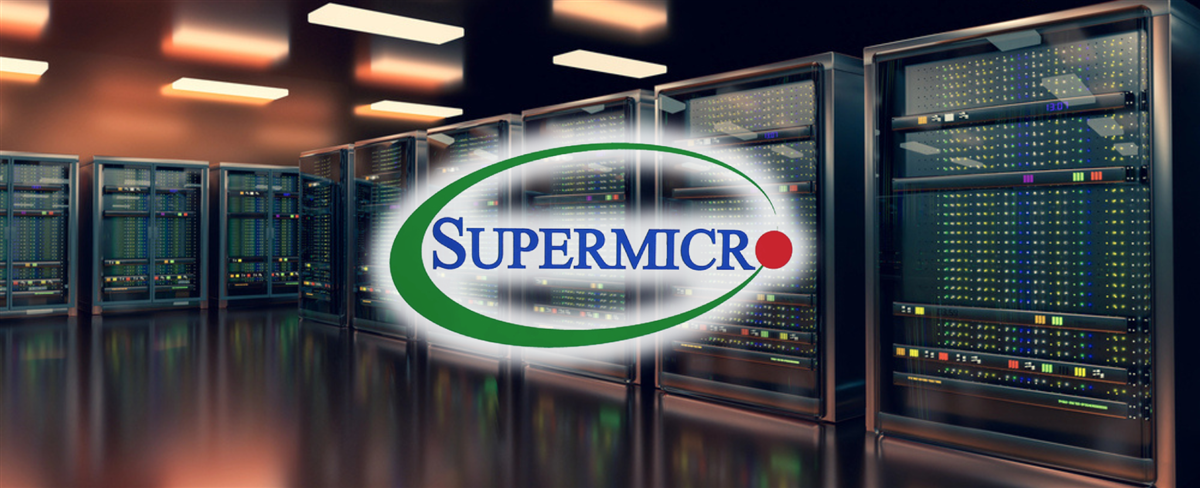| Written by Jeffrey Neal Johnson 
Investors in the commercial space industry are showing increased interest in Rocket Lab USA, Inc. (NASDAQ: RKLB). Due to its focus on innovation and market demands, the company has grown from a small launch provider to a major player in the space economy. Rocket Lab's success in the small launch market has positioned it for continued growth, making it an attractive option for investors looking to capitalize on the expanding space industry. Electron's Unmatched Launch Cadence Rocket Lab's Electron launch vehicle has established itself as a market leader, achieving a remarkable 100% mission success rate in 2024 and consistently demonstrating high launch frequency and rapid turnaround times. This operational excellence and reliability have secured a substantial portion of the small satellite launch market and have attracted contracts from commercial and government clients. This consistent success and rapid delivery of payloads are two of the key components of Rocket Lab's competitive advantage. Neutron: The Next Chapter of Growth Rocket Lab is strategically investing in the Neutron program, a medium-lift, reusable launch vehicle with a projected payload capacity of 13,000 kg to low Earth orbit. This expansion will significantly increase Rocket Lab's capabilities and offer substantial cost efficiencies through its reusable design. The successful hot-fire test of the Archimedes engine mitigates key technological risks and paves the way for Neutron's much-anticipated debut. The Neutron program positions Rocket Lab to target the growing market for deploying large satellite constellations. Successful development of this program will open the doors to more lucrative contracts and a broader range of customers. The company's success in already securing launch agreements for Neutron missions demonstrates industry confidence and reinforces Rocket Lab’s appeal to investors who are looking for growth. Once Neutron starts commercial flights, these launch agreements will create an entirely new revenue stream, further enhancing Rocket Lab's long-term prospects. Growth Momentum Builds Rocket Lab’s financial reports have shown consistent revenue growth, with a significant acceleration in 2024, putting the company in a strong position for future expansion. Quarterly revenue reports from 2023 and 2024 show this upward trend. In 2023, quarterly revenue was approximately $50 - 60 million. This increased to over $100 million per quarter by mid-2024. Revenue guidance for Q4 2024 suggests a potential record quarter of $125 - $135 million. This growth trajectory demonstrates strong demand for Rocket Lab's services and effective execution against a growing backlog of launch requests. While current profitability metrics reflect the ongoing investment in growth initiatives, key indicators point towards future margin expansion. Non-GAAP gross margins consistently exceeding 30% demonstrate a healthy core business capable of generating increasing profits as scale increases. Operating expenses, while substantial, are strategically allocated to research and development, primarily for the Neutron program, which is poised to unlock significant new revenue streams in the medium-lift market. Rocket Lab’s earnings report for the fourth quarter of 2024 (Q4 2024) is anticipated to be released on February 27, 2025, and will be a key catalyst. Meeting or exceeding its $125–$135 million revenue guidance could further solidify the growth narrative and likely positively impact investor sentiment. For investors focused on long-term capital appreciation, Rocket Lab's current financial picture may present a compelling entry point into a company with significant disruptive potential within the space economy. Diversifying Revenue Streams and Enhancing Profitability Rocket Lab's growth strategy centers around strategic diversification into spacecraft manufacturing and comprehensive space systems solutions. This expansion beyond launch services establishes multiple revenue streams, mitigates risk, and allows Rocket Lab to access higher-margin opportunities within the growing space economy. The Space Systems division is quickly becoming a significant revenue generator, complementing the established launch business and positioning Rocket Lab for sustained long-term growth. The Space Systems segment includes the adaptable and flight-proven Photon spacecraft platform, which can be used for a variety of missions. Rocket Lab also designs and manufactures a wide range of spacecraft components and subsystems in-house. This includes everything from high-performance space-grade solar cells produced at its Albuquerque facility to critical components like star trackers and reaction wheels. Additionally, proprietary software suites like MAX Flight and MAX Ground Data improve mission capabilities and operational efficiency for Rocket Lab and its customers. Space Systems offers inherently attractive profit margins compared to the capital-intensive launch services sector. By manufacturing and selling spacecraft platforms, components, and software, Rocket Lab captures a greater share of the value chain and generates recurring revenue streams through mission operations and support services. This strategic focus on Space Systems is expected to drive margin expansion over time, improving the company's overall financial health and enhancing its long-term investment appeal. As the space economy continues to evolve beyond launch-centric models, Rocket Lab's diversified Space Systems business positions it to capitalize on the broader range of opportunities and establish itself as a comprehensive space solutions provider. A Growth Stock Poised for Continued Success Rocket Lab's impressive revenue growth, technological innovation, and strategic diversification make it a compelling investment opportunity for investors interested in high-growth potential within the space sector. The anticipated success of the Neutron program will significantly increase revenue generation and contribute to profitability. While some near-term risks remain, Rocket Lab’s consistent execution, strong backlog, and strategic partnerships provide a strong foundation for its continued success and expansion.
 Read This Story Online Read This Story Online | Rural Texas Town Ramps Up Global Currency War
A small town has joined a radical $1.9 trillion attack on the global banking system... backed up by Elon Musk and the White House.  Read about it here. Read about it here. |
| Written by Jea Yu 
When it comes to the leading investment banks, Goldman Sachs Group Inc. (NYSE: GS) and Morgan Stanley (NYSE: MS) are often placed in the top five spots. Both are powerhouses for deals but also cater to different clientele with different risk appetites. Both are leaders in the finance sector and have tremendous success with their trading, wealth management, and underwriting services. Both banks posted blowout earnings with upbeat guidance, but which stock still has more upside? Goldman Sachs: Masters of the Universe Often dubbed the "Masters of the Universe," Goldman Sachs is the elite and clandestine top-tier investment bank that’s had a hand in some of the largest and most notable deals on Wall Street. The firm advised one of the largest deals in 2024 when Mars acquired Kellanova (NYSE: K) for $83.50 per share in an all-cash $35.9 billion deal. The company posted eye-watering results. Its strong deal flow and lucrative advisory fees continue to reinforce its dominance in the industry. As M&A activity rebounds, Goldman Sachs remains well-positioned to capitalize on future high-profile transactions. Crushing Wall Street Estimates (Again) Goldman Sachs reported Q4 2024 EPS of $11.95 per share, crushing consensus analyst estimates by $3.74. Net earnings were $4.11 billion. Revenues surged 22.5% YoY to $13.87 billion, beating $12.36 billion consensus estimates. The full-year 2024 EPS was $40.54, up from $22.87 in 2023. The full-year net revenues rose 16% YoY to $53.51 billion, and net earnings were $14.28 billion. Solid Financial Metrics for 2024 Goldman’s Global Banking & Markets generated $34.94 billion in net revenues driven by record net revenues in Equities, Investment banking fees, and Fixed Income, Currency, and Commodities (FICC). Higher net revenues in Global Banking & Markets and Asset & Wealth Management spurred revenue growth. Provision for credit losses was $351 million, down from $577 million in Q4 2023 and sequentially from $397 million in Q3 2024. Goldman Sachs ranked #1 worldwide in announced and completed mergers and acquisitions in 2024. Assets under supervision grew 12% to a record $3.14 trillion. Nextracker CEO Dan Shugar commented, "In the quarter, we successfully deployed several of our newly launched products and features at scale, expanding our total addressable market. In addition, we continue to increase our investment in R&D to drive rapid customer-centric innovation, ensuring our solutions remain at the forefront of solar technology while driving value for stakeholders worldwide." Goldman Sachs CEO David Soloman commented about the reach of Goldman’s alumni, “Today, more than 275 of our alumni are in C-suite roles at companies with either a market cap greater than $1 billion or assets under management of over $5 billion and hundreds of other alumni end up coming back to the firm as Boomerang hires, including roughly 25 partners and managing directors last year alone, a testament to our enduring brand and culture.” Goldman Sachs shares are trading up 11.84% year-to-date (YTD) as of Jan. 31, 2025. Morgan Stanley: Blue Shoe Investment Bank and More Goldman Sachs is arguably more risk-tolerant, whereas Morgan Stanley offers a more balanced approach with greater emphasis on wealth management to a wider clientele. Goldman Sachs Private Wealth Management clients are rumored to be required to have at least $10 million invested with the firm. A Morgan Stanley Private Wealth Management account requires a purported minimum of $5 million for its ultra-high net worth clients. Morgan Stanley is a much larger firm with nearly double the number of associates worldwide, at 80,000. Morgan Stanley also adopted a large retail and self-directed investor clientele from its acquisition of E*TRADE, which saw active traders grow above 2022 levels. Morgan Stanley Crushes Q4 as Well For Q4 2024, Morgan Stanley reported an EPS of $2.22, beating estimates by 52 cents. Revenues surged 25.9% to $16.23 billion, crushing consensus estimates of $15.03 billion by over $1.2 billion. The firm’s expense efficiency ratio was 71% versus 77% in the previous year, reflecting stronger expense discipline. Solid Segment Metrics Institutional Securities reported net revenues of $7.3 billion, up from $4.9 billion last year. Pre-tax income was $2.4 billion compared to $408 million last year. Equity net revenues surged 51% YoY, driven by increased client activity with regional strength in Asia and notable strength in Prime Brokerage. Fixed Income revenues grew 35% YoY, driven by credit on higher lending, securitization activity, and higher structured revenues in commodities. Client assets rose to $7.9 trillion, nearly tripling in the past three years. Fee-based flows in Wealth Management grew to $123 billion in 2024. Morgan Stanley CEO Ted Pick commented on growing its retail segment, “We're going to continue to focus on checking accounts with competitive rates, integrating products into the client journey as they move along with E*TRADE to potentially a classic FA (financial advisor). And then, as you know, we've been really banging the drum on the workplace where we can partner with companies to reach employees.” Morgan Stanley shares are up 10.11% YTD as of Jan. 31, 2025.  Read This Story Online Read This Story Online | He turned PayPal from a tiny, off-the-radar startup… to a massive $64 billion giant.
Then, he did it again with Tesla… which is up more than 19,500% since 2010.
For perspective, that turns $100 invested into almost $20,000!  Click here now for the urgent details. Click here now for the urgent details. |
| Written by Gabriel Osorio-Mazilli  Momentum investors are often sentiment-driven, as they must not only recognize when a stock’s trend has peaked or bottomed but also gauge when market sentiment has reached extreme optimism or pessimism. Momentum investors are often sentiment-driven, as they must not only recognize when a stock’s trend has peaked or bottomed but also gauge when market sentiment has reached extreme optimism or pessimism.
With that in mind, shares of Super Micro Computer Inc. (NASDAQ: SMCI) now represent one of the best risk-to-reward ratios in the technology sector for the United States, not only due to their extremely low price relative to previous highs but also because of their valuation multiples compared to where the company’s product and service demand is potentially headed in the coming months. Themes in the artificial intelligence space, particularly for names like NVIDIA Co. (NASDAQ: NVDA) and others, have been challenged by the new claims coming out of Chinese company DeepSeek. However, it is clear thus far that no concrete evidence points to these claims being a reality, so the longer-term industry growth is relatively intact. Here are the three main reasons Super Micro Computer’s discount won’t last long. Not the First Rodeo for Super Micro Computer In a competitive industry like technology, it is not uncommon to see companies fall victim to accounting scandals, especially when it comes to revenue. In order to meet financial goals and accurately manage tight demand schedules, some companies may choose to undertake their own ways of revenue recognition in accounting terms. While this might be considered a negative, it hasn’t been done before, so investors have a history to look back on and know that it isn’t always fraudulent. Super Micro Computer faced similar accusations in 2018 and 2020, coming out of them unscathed and better than before. Knowing this, today’s allegations, which have brought the stock down to a dismal 20% of its 52-week high, might not have the long-lasting impact that most of the market is predicting they will. But that’s not the only reason to believe that Super Micro Computer stock might recover from this horrendous fall. Tapped to All Tail Winds in Technology Despite the recent scandals involving Chinese technology, one thing remains true. Demand for data centers and hardware to host these new artificial intelligence models for training will also help Super Micro Computer’s main customers surge. That being said, as NVIDIA, Advanced Micro Devices Inc. (NASDAQ: AMD), and other such chipmakers see their orders come through in this growing industry, chances are that Super Micro Computer’s billings will follow suit. Even with their own way of revenue recognition, the company is still posting revenue growth that seems to be okay with Wall Street analysts. This is why there is a consensus earnings per share (EPS) forecast for up to $1.13 a share for the third quarter of 2025, meaning a net growth rate of as much as 23% from today’s $0.92 level. If analysts, who undertake a lot of the financial analysis work, saw a discrepancy in Super Micro Computer stock numbers, this forecast would have probably been changed long ago. More than that, it seems like the market is still willing to pay a steep premium for this stock over the semiconductor industry's average valuation. At a 102.9x price-to-earnings (P/E) ratio, Super Micro Computer stock trades well above the industry’s 40.6x average valuation. Some investors might call this expensive, while seasoned traders understand that the market always pays a premium for the stocks it expects will outperform in the near future. Lots of Upside, Very Little Downside Risk The third and final reason investors should consider Super Micro Computer stock for a potential turnaround is the risk-to-reward ratio at today’s prices. The low price in relation to 52-week highs makes it an attractive proposition in itself, but so is the fact that it has bottomed since late 2024. If the news had not already been priced in, the stock would have gone much lower than its $17.25 bottom in October 2024. Knowing this is the setup today, Citigroup analysts felt comfortable reiterating their Buy rating on the company while keeping a valuation of up to $175 a share, calling for a net rally of as much as 53.1% from today’s discount. As another gauge to consider, investors can look at the recent media mentions for Super Micro Computer stock over the past month. These mentions grew from 31 to the start of January 2025 and rose to a high of 128 for the first week of February 2025. This might signal that many willing buyers might be searching for answers, and now investors have three of them today.  Read This Story Online Read This Story Online | I’m here to issue a stark warning to you about an unexpected $2 trillion shock that could impact every trader in the country – in the next 30 days.
In fact, I believe it could begin as soon as March 13th…
Meaning you don’t have much time to prepare. Click here like your financial health depends on it. |
|
